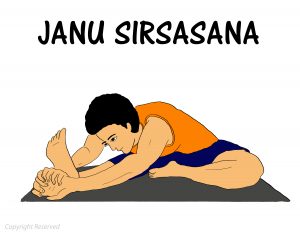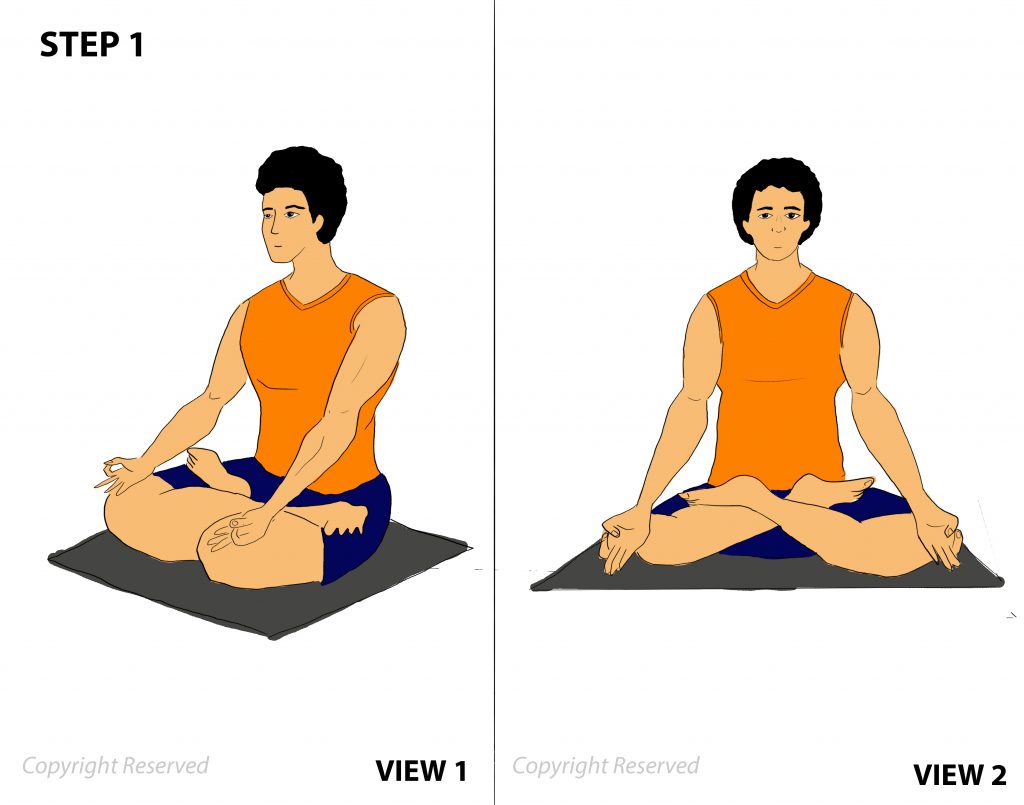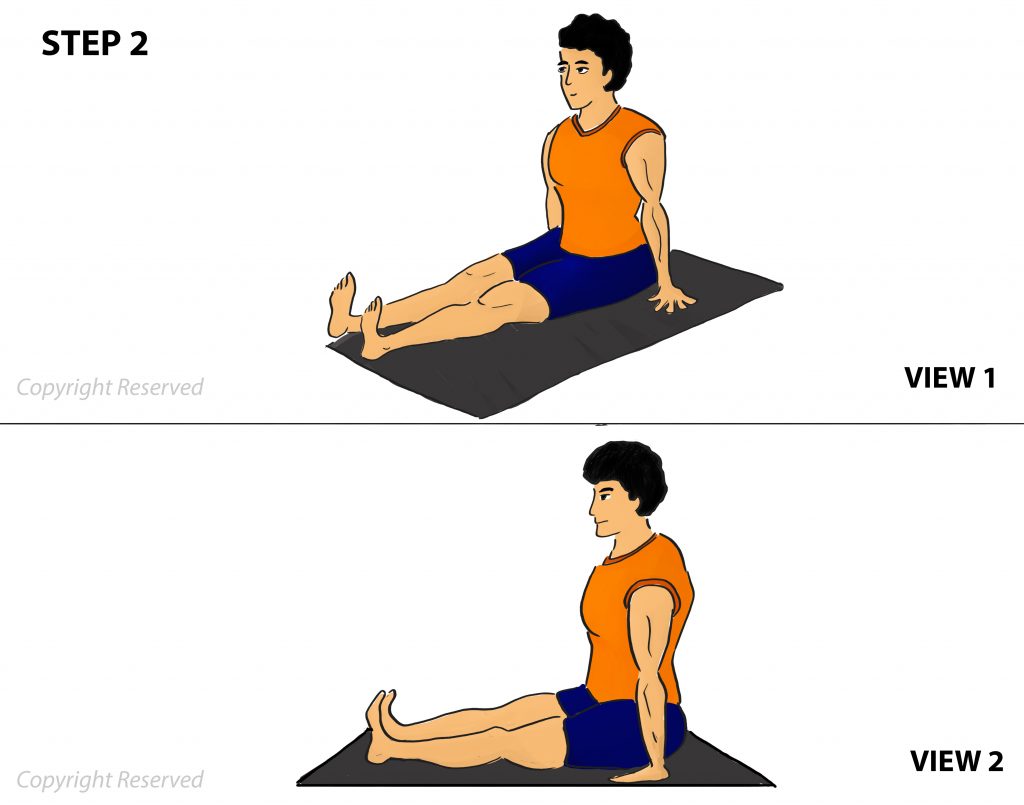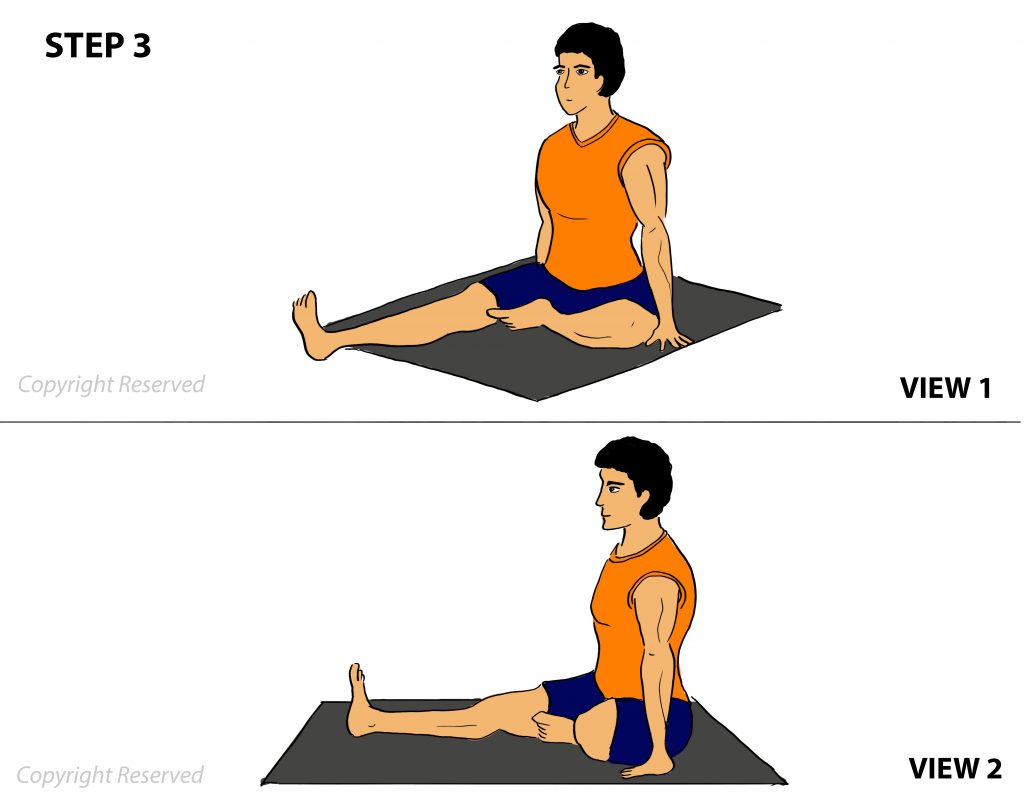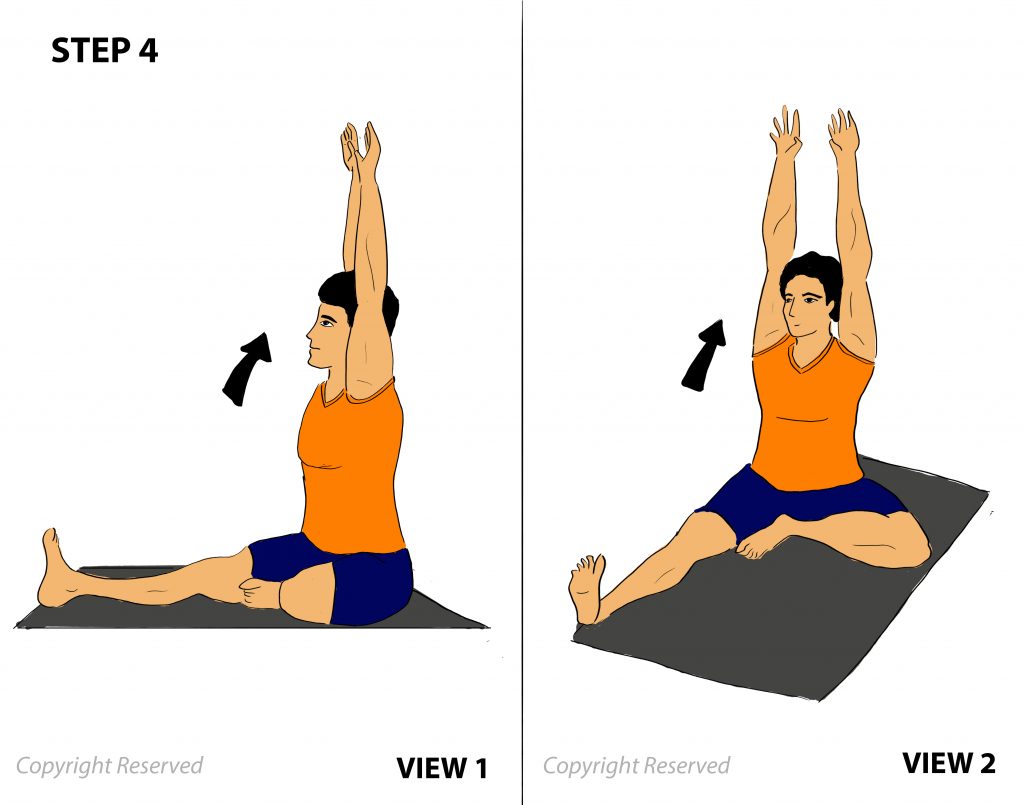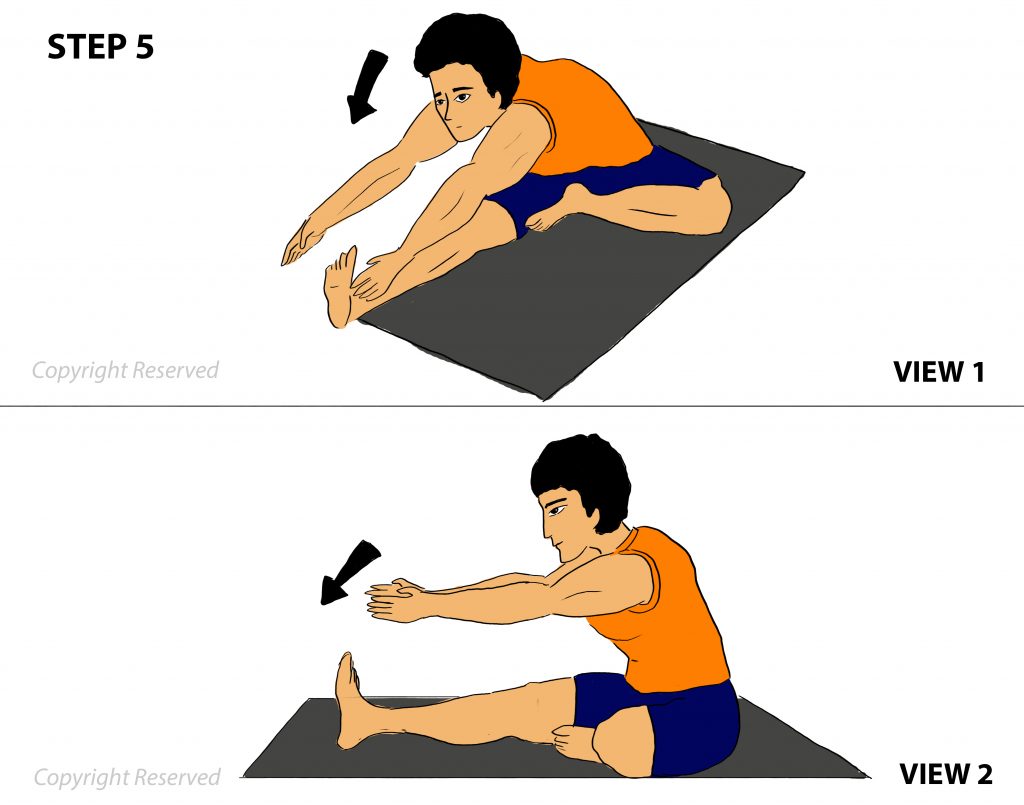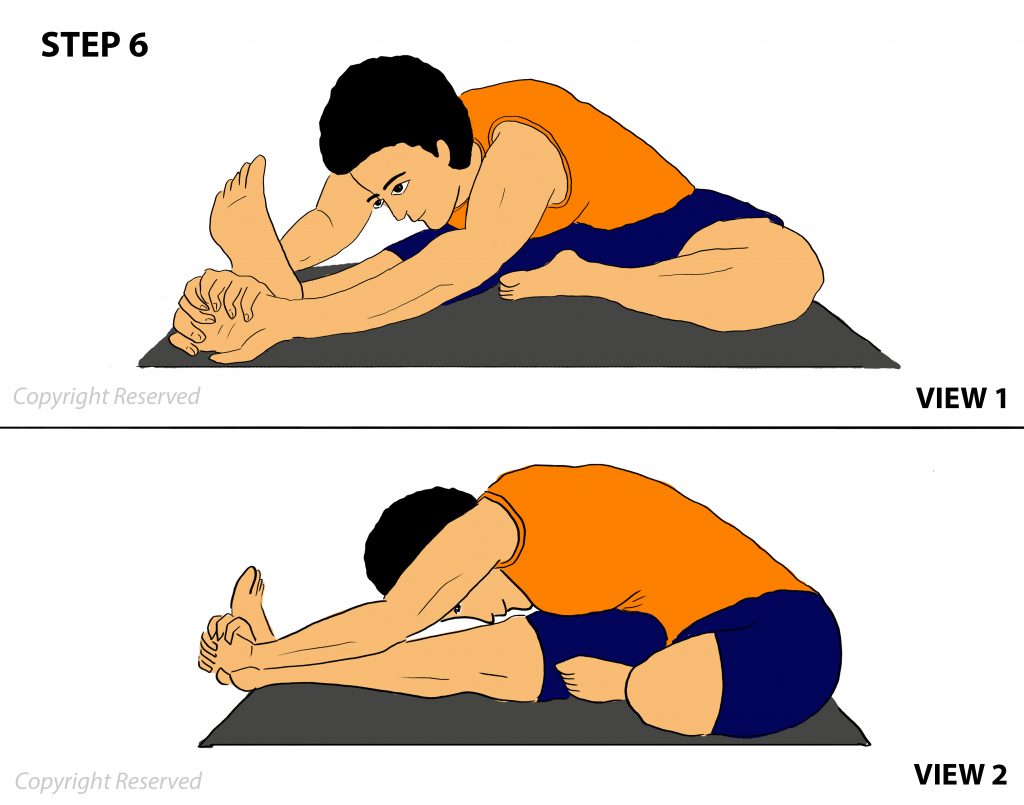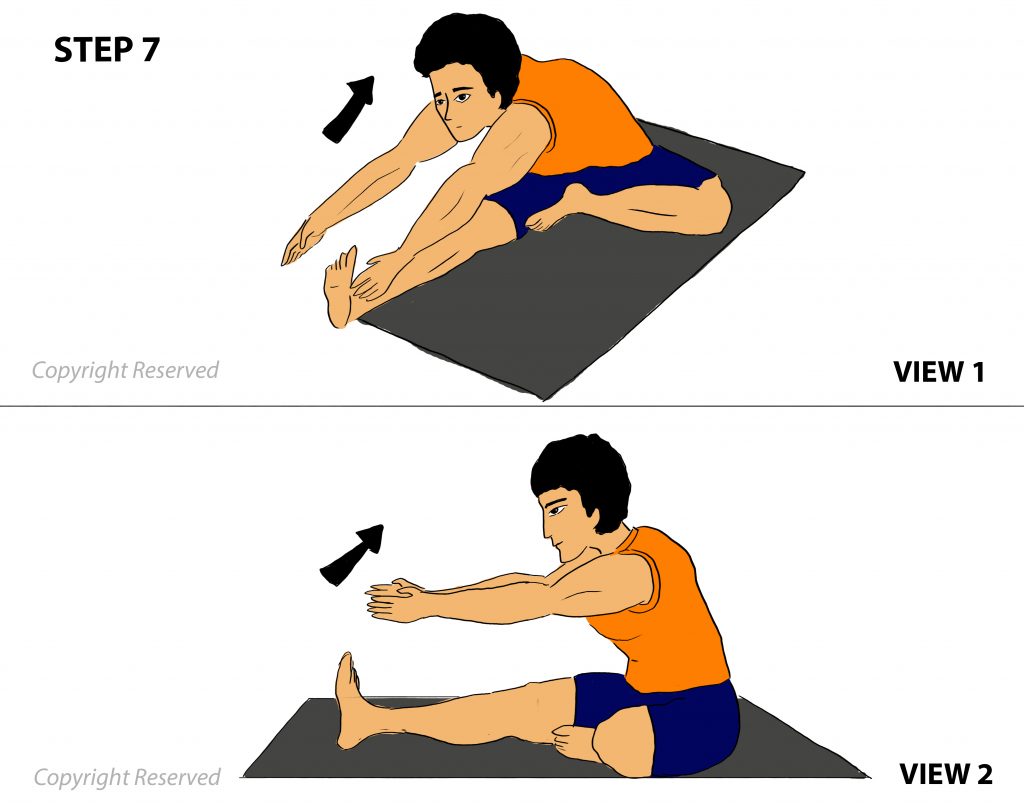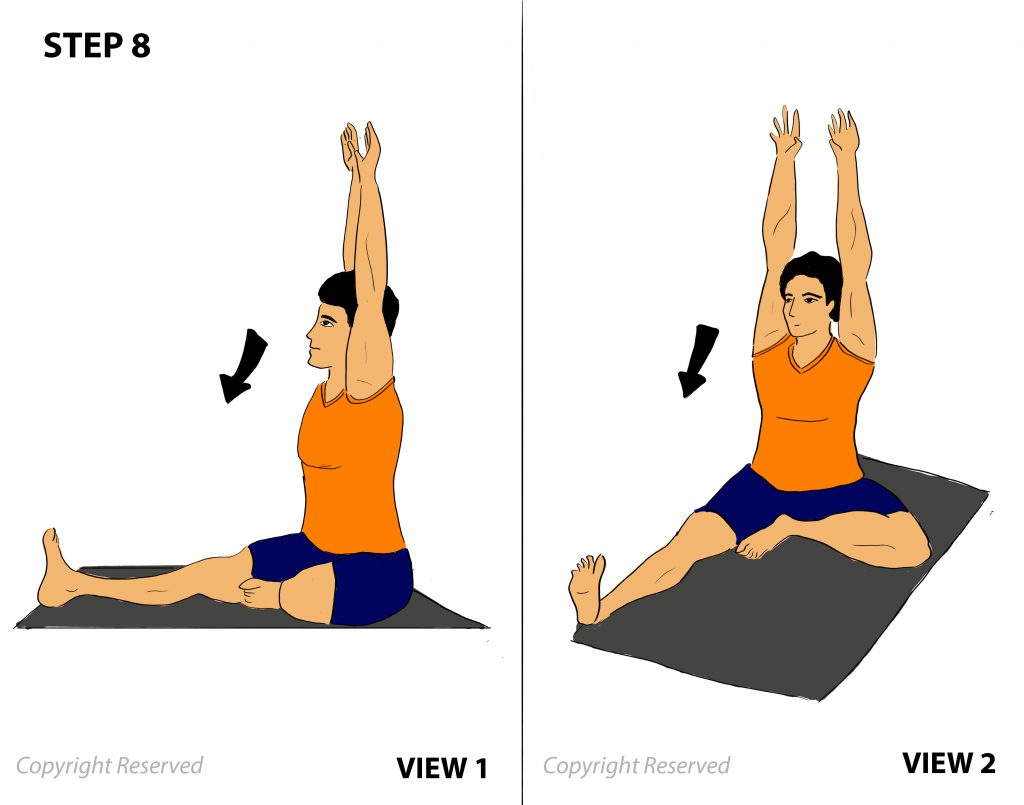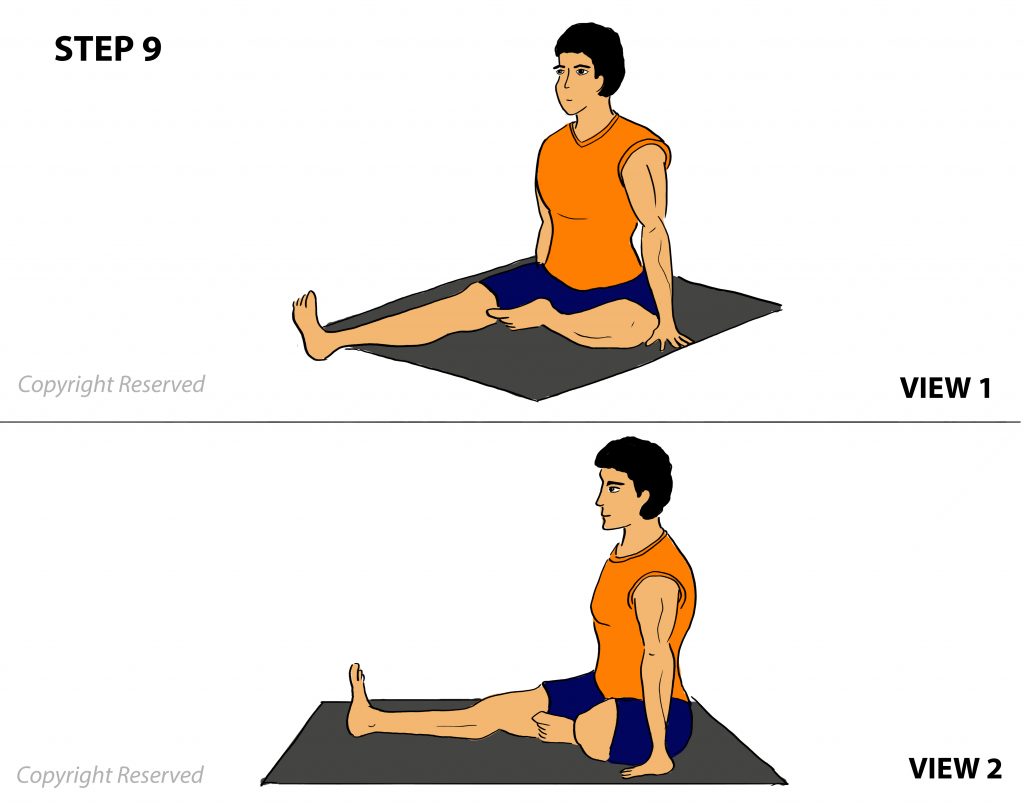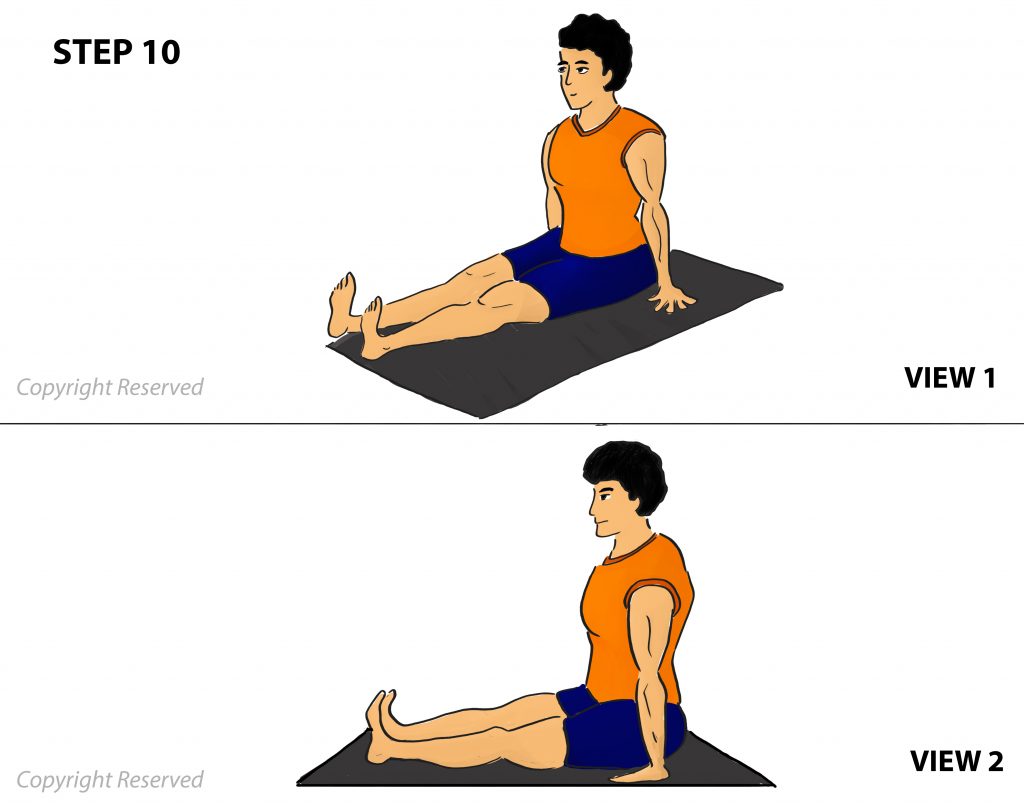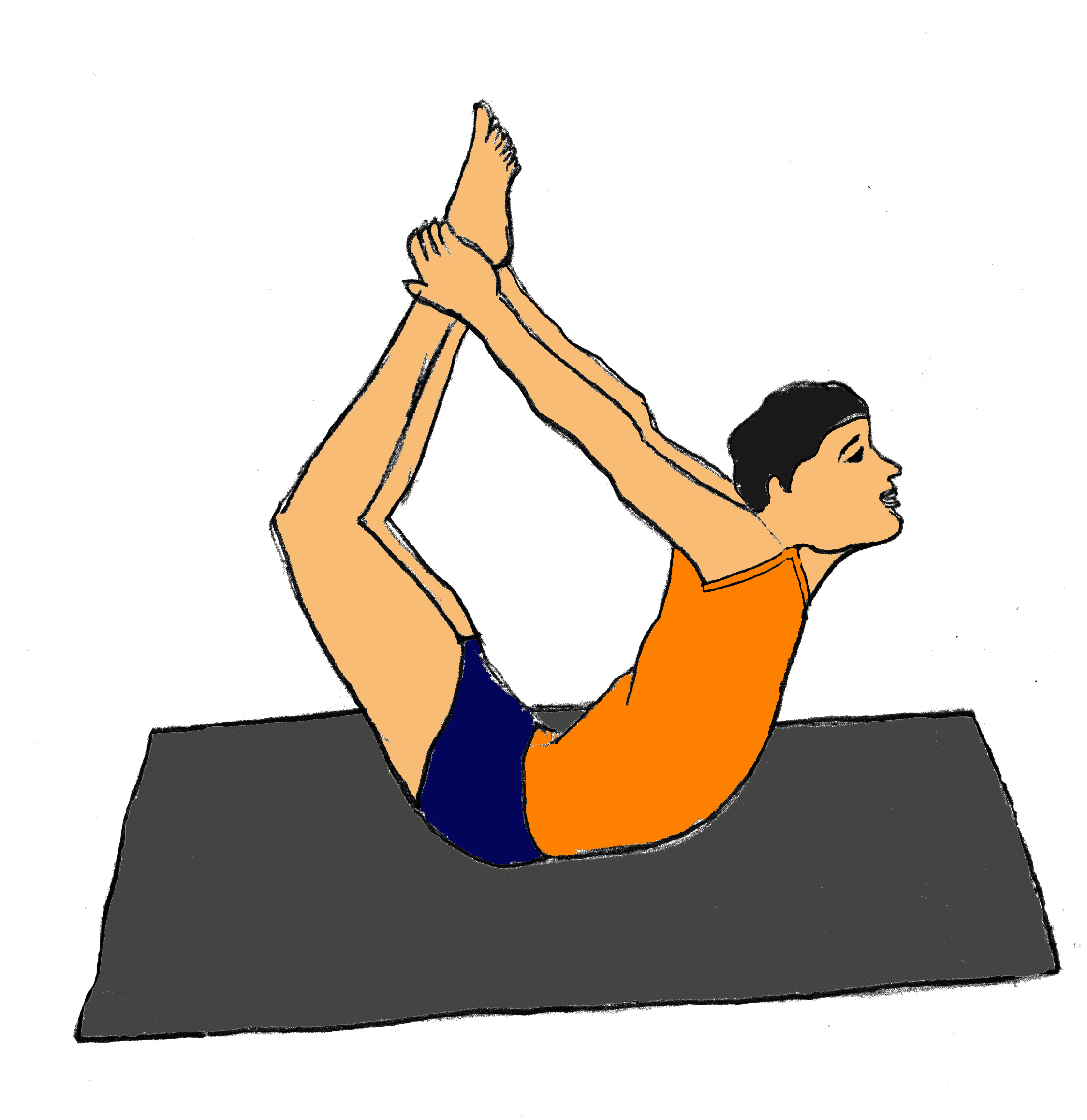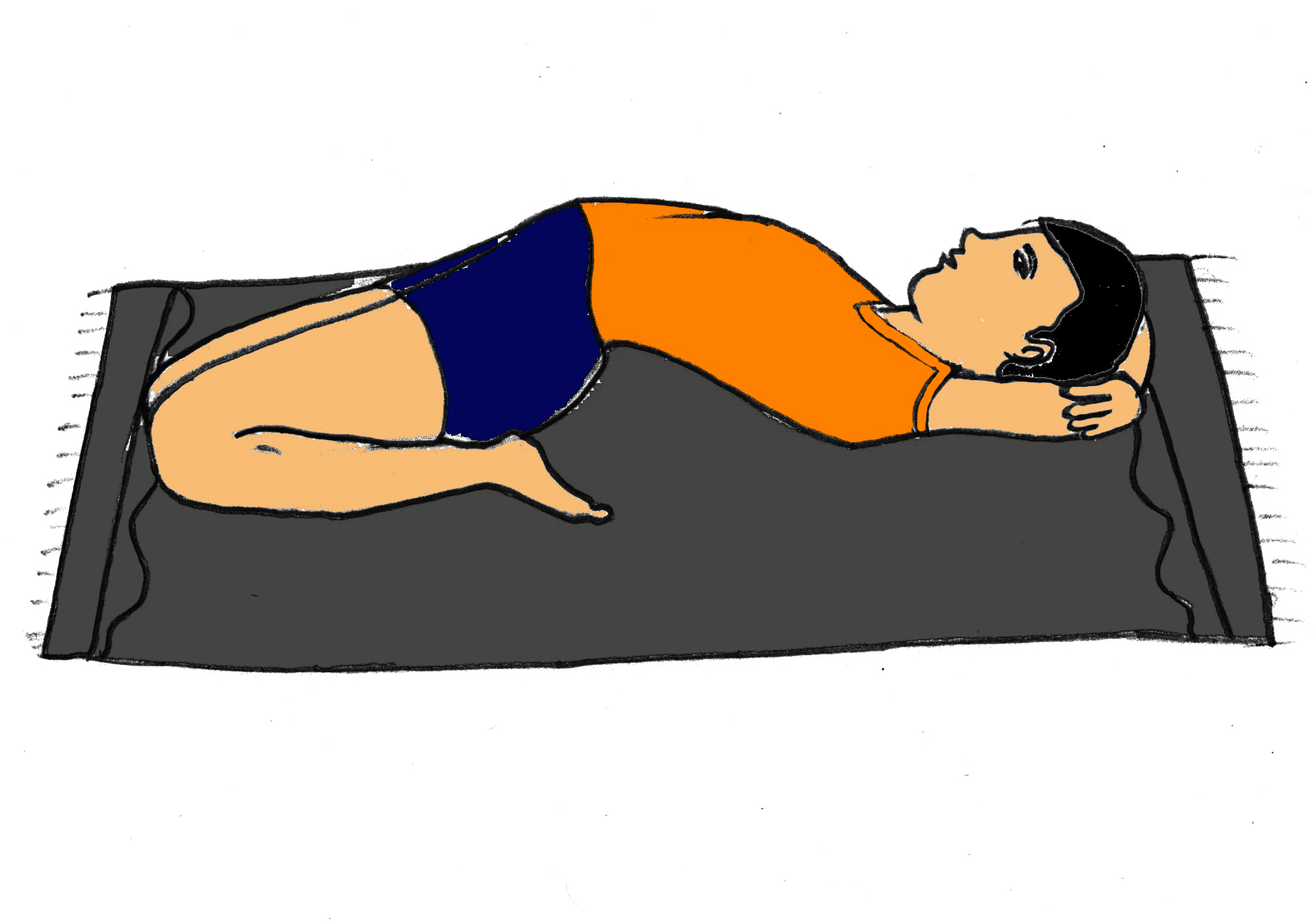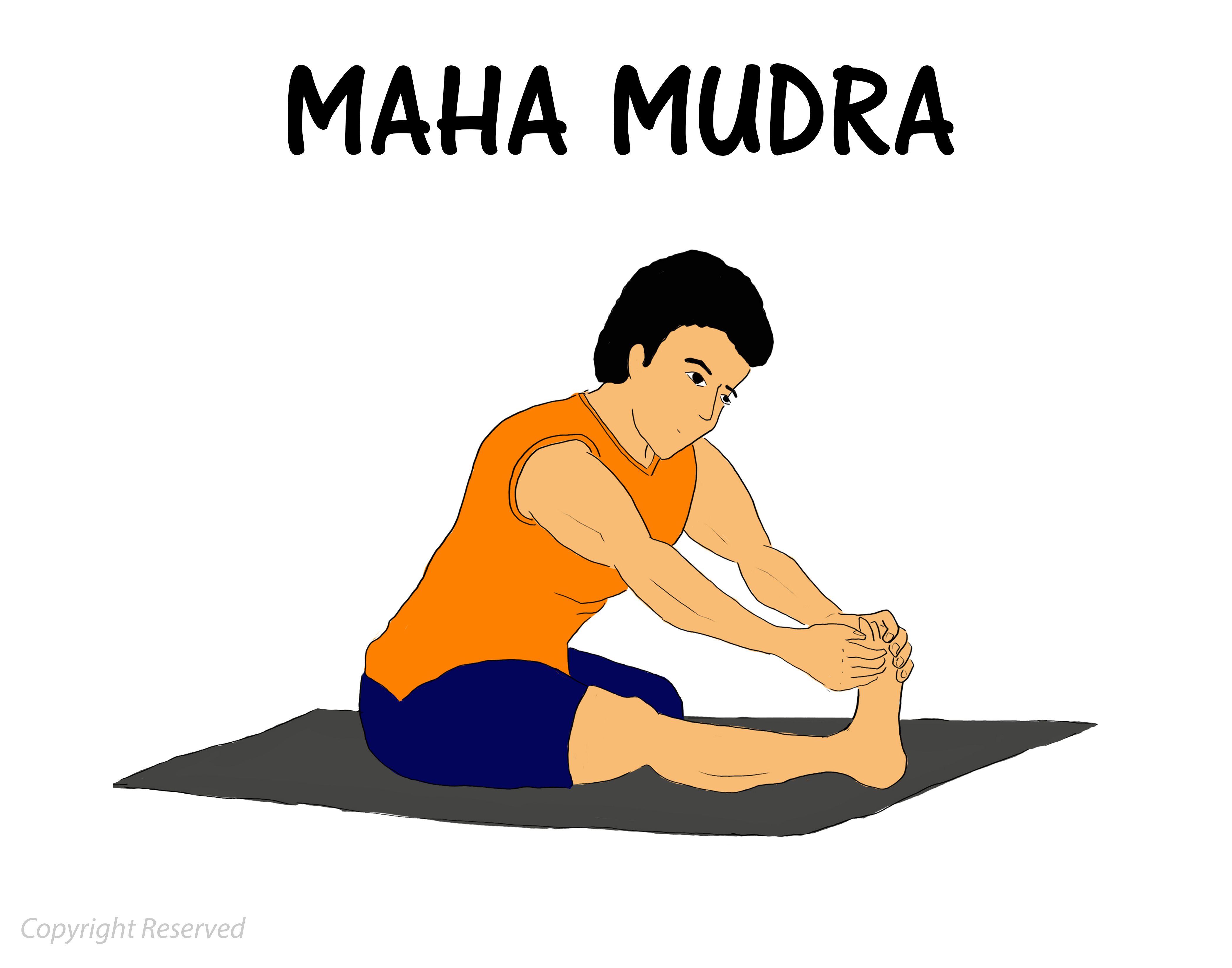Janu Sirsasana
Janu Sirsasana, also known as Head to Knee Pose, is a highly effective form of Ashtanga yoga asana that helps you to bend your body and touch the knee with your head. It is a form of intermediate yoga. Practicing this asana regularly can produce a number of holistic effects on the body. The effectiveness of Janu Sirsasana makes it one of the most formidable yoga poses. It is, therefore, no wonder that this asana has been strongly recommended by eminent yoga master Aadil Palkhivala.
Steps of Janu Sirsasana
- To begin the asana, sit on the ground and keep your back properly erect.
- Stretch out both of the legs.
-
Slowly bend the left knee as you place the bottom of your right foot against inner part of the right thigh. Keep the left leg and the knee pressed comfortably on the floor.
-
The navel and chest should line up properly with the right leg. This is also going to place your torso in right position. Use your hands to provide support by keeping them beside the hips.
-
Inhale gently. Extend your torso and stretch the arms up so that it generates more length in the spine.
-
Exhale and slowly bend forward right from your hip’s base as if you’re just coming forward from your groin area to front of your sitting bones.
-
Then reach for your toes or ankles with your hands if you can or keep on stretching until you feel comfortable.
- Make sure that you do not stretch too far as it will only tend to round your spine and cause an injury.
-
Hold on to the pose and gently breathe slow and deep. As you keep on breathing, feel the breath slowly filling the groin, back part of the right leg as well as the whole area of the back.
- Finally, inhale and gently release the pose. Allow the muscles in the abdomen to contract.
- Extend the torso and stretch the arms up.
- Then, Bring the arms back to your sides and relax for a couple of seconds.
- Lift your torso and stretch out the left leg.
- Repeat this asana with your left leg the same way as done before.
Preparatory Poses associated with Janu Sirsasana
Here are the main preparatory poses that you need to perform before Janu Sirsasana.
- Bālāsana
- Vriksasana
- Buddha Koṇāsana
- Uttanasana
- Adho Mukha śvānāsana
- Supta Padangusthasana
Tips for performing Janushirsasana
You should keep in mind that before you start practicing Janushirsasana it is extremely important to keep your bowels and stomach empty at least for a few hours prior to the asana. Having your meals about 4 to 6 hours before the asana can not only provide you with the time to get your food perfectly digested but also ensure that you have sufficient energy to spend during the asana practice. The best time to practice this asana is during the first hours of the morning. However, if you find it difficult to wake up during that time, you can also practice Janushirsasana during the evening hours.
As a beginner, it is extremely important that you ease carefully into the pose. Firstly, make sure that the bent foot remains always by your straight leg; do not slide it under your straight leg in any circumstances. While looking down, make sure that you are able to view your foot sole. Secondly, make sure that you keep the bent leg perfectly active. Gently broaden your foot and press your heel towards your inner groin just of your straight leg.
The science of Janushirsasana
Janushirsasana is quite challenging for every practitioner and especially for men. While you are practicing it, you will find that your lower back, hamstrings, and hips can take some time to open up completely to the whole range of motions. That being said, Janushirsasana can work amazingly well to increase the flexibility of the hamstrings, thighs, hip joints, arms, back and the shoulders. The asana can soothe both the mind and the heart as well as stretch your entire body. The asana is done mainly at the final stage of a sequence as your body is all warmed up. The asana prepares your body for the deeper forward bends. Even though the asana is referred to as head-to-knee pose, the process of touching the head to the knee is usually not regarded to be as important as maintaining your torso perfectly stretched out during the pose.
Benefits of Janushirsasana
Here are the main benefits of Janushirsasana
- It helps to calm the brain as well as get rid of mild depression
- It stretches the spine, liver, spleen, hamstrings, groins, and shoulders
- The asana stimulates the kidneys and liver
- It helps to reduce pain in the waist and legs.
- It is one of the best exercises for getting rid of belly fat.
- The asana greatly improves digestion
- It can relieve symptoms of menopause
- It effectively strengthens rib bones.
- The asana also makes the spinal cord flexible.
- It is extremely beneficial for seminal weakness, constipation, and dyspepsia
- Relieves fatigue, anxiety, headache, and menstrual discomfort
- The asana is therapeutic for insomnia, high blood pressure, and sinusitis
-
It can strengthen back muscles at the time of the pregnancy up to the second trimester. When performed without coming forward, it can keep the back spine perfectly concave and maintain the front torso long.
Precautions and contraindications associated with Janushirsasana
These are some of the precautions and contraindications that are related to the practice of Janushirsasana.
- Avoid Janushirsasana asana if you suffer from diarrhea or asthma.
-
In case you have some knee injury, do not flex or stretch the knee too much. Instead, use a folded and layered blanket for support.
-
Do not practice the asana if you are having some serious type of lower back injury or lumbar disc herniation.
So now that you are well acquainted with the steps of Janushirsasana, start practicing it for the optimum benefit of your physical, mental and spiritual health.
References
Click Here
Click Here
Click Here
Click Here
Click Here
Click Here
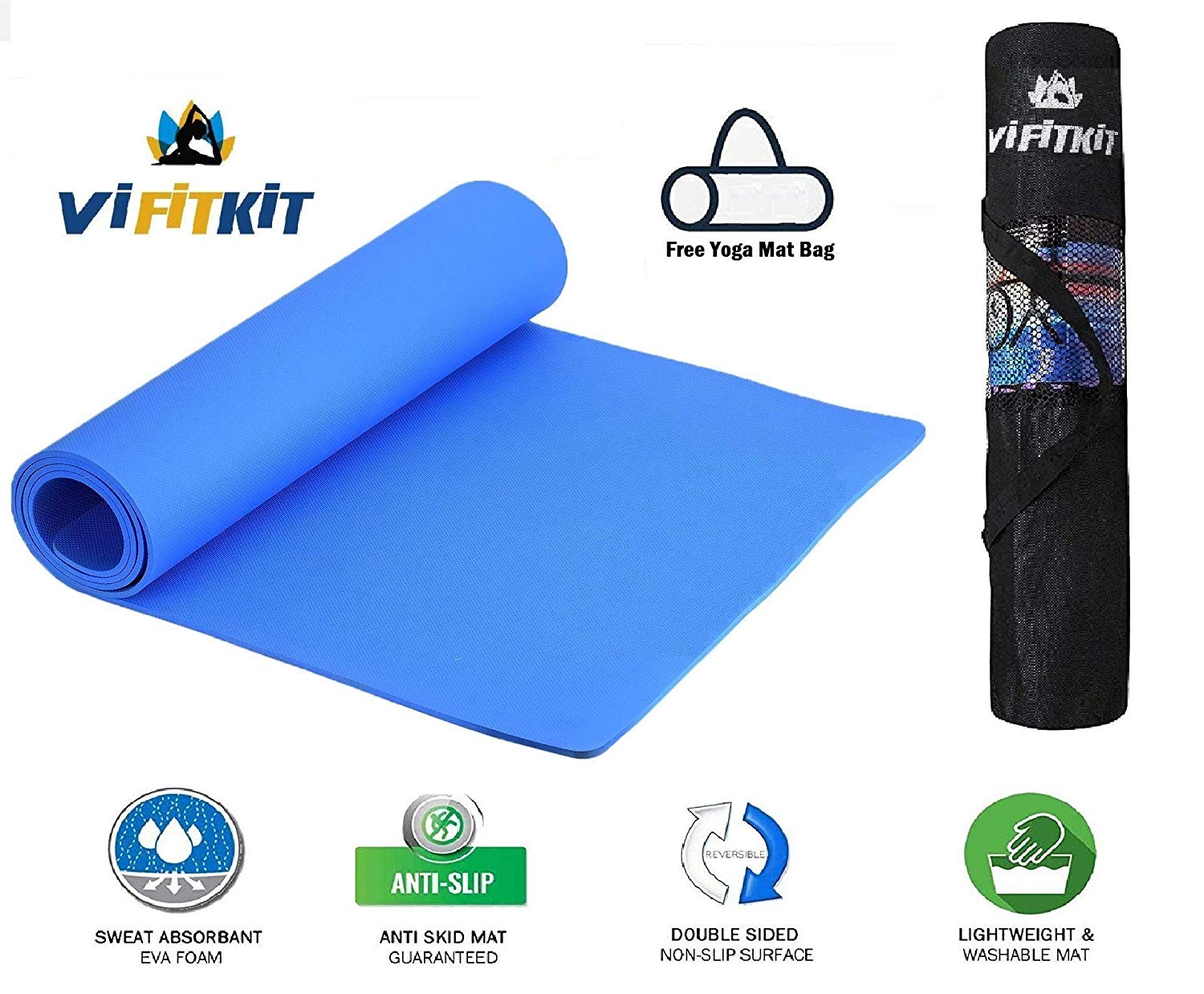
VI FITKIT Yoga Mat Anti Skid EVA Yoga mat with Bag for Gym Workout and Flooring Exercise Long Size Yoga Mat for Men and Women (Color - Blue)
Price: Rs 399.00 FREE Delivery. Details
About The Product
- With high density foam material, The thick ( 3 mm thick ) premium mat with comfort cushion spine, hips, knees and elbows on hard floors. This makes it a perfect size for both men & women.
- SWEAT RESISTANT AND WASHABLE YOGA MAT - Next time don’t stress when you sweat while doing yoga. The yoga mat is completely sweat resistant and has a Moisture resistant Technology which makes the mat easily washable with soap and water.
- This Yoga Mat is designed to give you the most comfortable yoga experience possible. The extra thick mat protects joints without compromising support or stability
- DURABLE & ECO FRIENDLY YOGA MAT - The EVA material is extremely durable and eco friendly. It lasts upto 5 times more than a regular plasticky mat! The material is biodegradable and free from PVC, silicon, latex and other toxic materials. We believe in creating quality and Eco friendly products for our customers!
- Care Tips: Do not place in washing machine or dryer, Please clean before and after using, clean regularly and keep it dry for healthy using.
